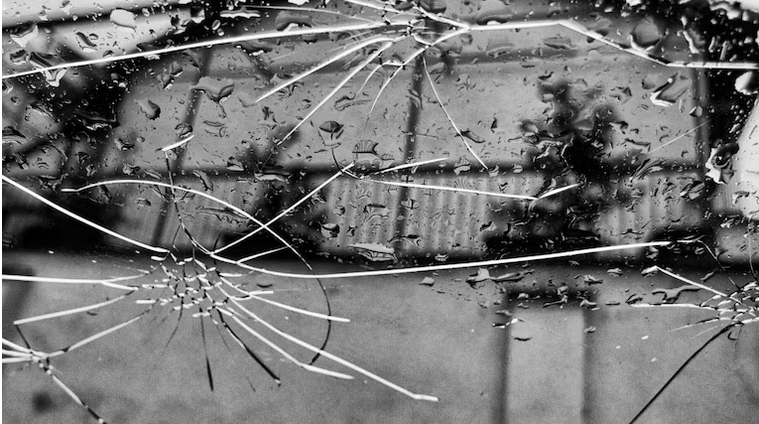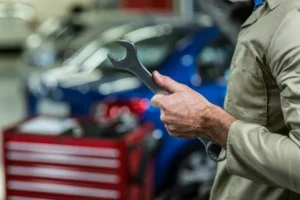Quick Facts About Windshield Replacement
- Advanced tech in newer model cars makes windshield replacement expensive.
- What was once a routine repair can now exceed $1,000.
- Aligning cameras and sensors add to the bottom line cost.
A rock cracks the windshield; what do you do? If you think a replacement windshield can be installed while the car sits on your driveway for $300 to $500, think again.
If your vehicle comes equipped with rain-sensing wipers and advanced driver assistance systems (ADAS) like automatic braking and adaptive cruise control, be prepared to spend $1,000, maybe more, for a replacement windshield. The high costs would include recalibrating ADAS and related safety features like head-up display and rain-sensing wipers.
Read on to find out what you need to know about car windshield replacement, recalibration, if you need to tap your insurance, and more.
- Replacing a Car Windshield
- Driver Assists, Head-Up Displays To Blame
- Original-Equipment Glass Recommended
- Wrong Windshield Spells Trouble
- HUD Is a Small, But Growing Concern
- Rain-Sensing Wipers, Driver Assists Require Special Treatment
- Recalibration Is Key
- Does Insurance Cover Windshield Damage?
- Making the Right Choice
Replacing a Car Windshield
On Older Vehicles
When it comes to windshield replacement, it’s typically much cheaper in an older car versus a newer one. If you’re getting a typical windshield for an average older vehicle with little to no technology add-ons, you can expect to pay at least in the range of $300 to $600 if you don’t use insurance. It typically costs more for a luxury vehicle.
On Newer Cars
Replacing windshields on newer cars is more complex. The ADAS technology that connects to the windshield can substantially increase the repair cost due to things like the recalibration of sensors and more. This also applies to electric cars. Replacement costs can exceed $1,000.
Speak with a mechanic to get estimates for a replacement for your year, make, and model of car.
Driver Assists, Head-up Displays To Blame
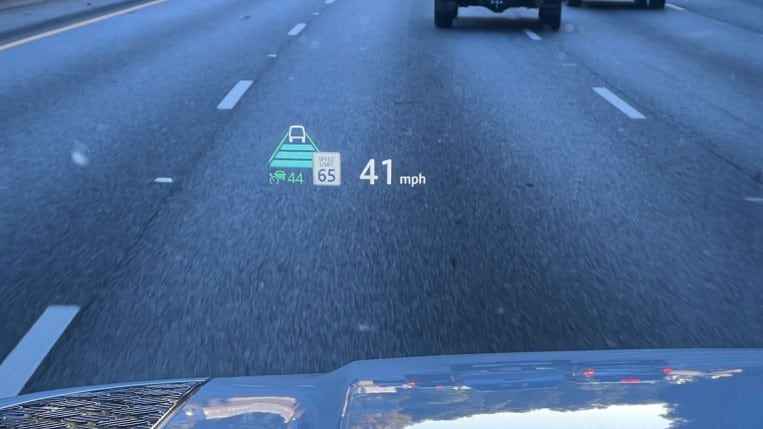
Head-up displays, or HUD, and advanced driver-assistance systems are now offered in a wide variety of vehicles. Once reserved for luxury cars, HUD, ADAS, and rain-sensing wipers are now available in vehicles like Chevrolet, Ford, Hyundai, and Kia.
Among the other ADAS safety features commonly seen today are adaptive headlights, forward collision warning, and lane keep assist. Some of these safety features are standard, some are available in option packages. Radar positioned on the front of the car detects an object, and a camera located in the grille or behind the windshield identifies the object as a car or pedestrian, for example.
A special replacement windshield must be installed for features like HUD, ADAS, and rain-sensing wipers to work properly.
Original-Equipment Glass Recommended
“It is really critical for cars that have ADAS and head-up display that you have a windshield that is either an original equipment part, or one that meets the very strict standards for optical clarity and lack of distortion set by GM, Mercedes, or whoever it happens to be for that vehicle,” said Michael Calkins, manager of technical services in AAA’s engineering and repair department.
“If those standards are not met, the sensors are not going to function properly, and your lane keeping, automatic emergency braking, whatever it happens to be that those cameras support, are not going to be 100% efficient and effective,” Calkins said.
The rain sensor also may not activate if it cannot determine the amount of water on the windshield. It could be a safety issue and cause an accident because the systems did not work as engineered.
Distortion is another issue. It is important that the body shop or glass company know the vehicle’s year, make, and model. They will also need the vehicle identification number, or VIN, to install the correct replacement windshield. For example, there are 11 replacement windshields for a 2017 Hyundai Santa Fe, according to Safelite AutoGlass.
Wrong Windshield Spells Trouble
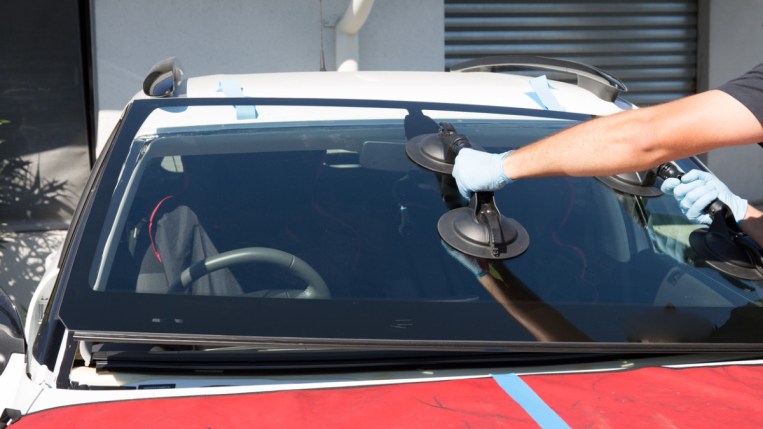
If a technician installs the wrong replacement windshield in a vehicle with head-up display, “you would get a ghosted or double image. You will see actual separation. Let’s say the speed of the vehicle is 60 mph. You will see two 6s, you will see a secondary 6 floating above the primary 6,” said Mike Richardson, General Motors’ technical expert for fixed glass and glazing.
Head-up display uses a projector in the instrument panel to project a digital transparent image on the vehicle’s windshield in front of the driver. The data is the same information located in the instrument panel. The purpose of HUD is to keep important data clustered together on the windshield in front of the driver’s eyes to reduce the amount of time the driver’s eyes are not on the road. The expected result is fewer accidents. But if the driver can’t read the data or it’s blurry, it could cause an accident.
Other information HUDs project on the windshield can be turn-by-turn navigation information, speed limit signs, speedometer, cruise setting speed, warning lights such as low fuel, lane keeping assist information, blind-spot collision warning, and audio information.
HUD Is a Small, but Growing Concern
Although General Motors introduced the first production car with head-up display in 1988, it’s becoming increasingly popular. Carmakers now offer it as part of an option package or include it in a model’s higher grade. To prevent the digital image from ghosting or creating a double image on the windshield, a polyvinyl butyral resin is inserted between the two windshield layers in the rectangular area where the digital information is projected. The transparent vinyl has a wedge pattern that prevents the images reflected on the windshield from ghosting.
However, not every vehicle requires a special windshield for head-up display. Some vehicles like Mini and Ford Escape, use a small plastic lens found on top of the instrument panel that folds down when not used. The information is reflected off the lens, not on the windshield.
Ask your local service center if your car requires a special windshield replacement.
Rain-Sensing Wipers, Driver Assists Require Special Treatment
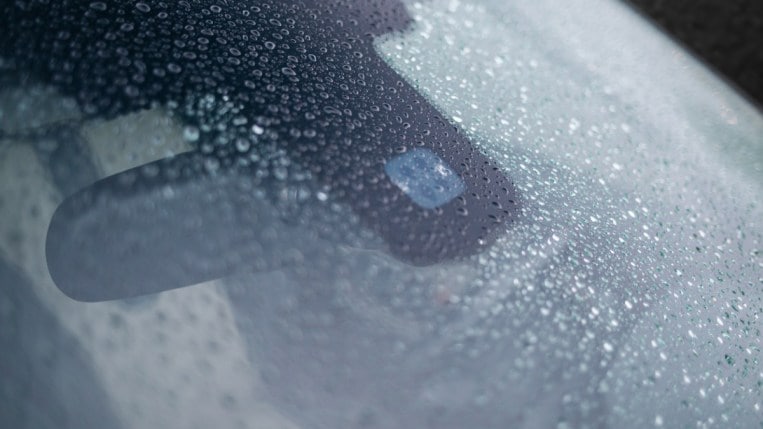
Rain-sensing wipers and ADAS are becoming more common. Vehicles equipped with ADAS and rain-sensing wipers require more work than popping out the broken windshield and installing a replacement. The next step is a thrust wheel alignment to ensure the rear wheels are lined up directly behind the front wheels and not a few degrees off. If misaligned, the driver assistance features may not activate when needed.
Recalibration Is Key
Finally, ADAS needs to be recalibrated. There are two types of ADAS: Most German and Asian brands use a static target system, and domestic brands generally use a dynamic system. There also are a few brands that use both.
Vehicles with a static system can get complicated to recalibrate and require a building with a large amount of level, unobstructed space where targets can be positioned. In addition, recalibrating the system to recognize targets can take up to 3 hours.
Dynamic ADAS is less complicated. A special tool is connected to the vehicle’s OBD2 port under the instrument panel to start recalibration. After that, the vehicle is taken on the road and driven at specific speeds in order to relearn such things as road markings and obstacles. The process can take 30 minutes to an hour.
Does Insurance Cover Windshield Damage?
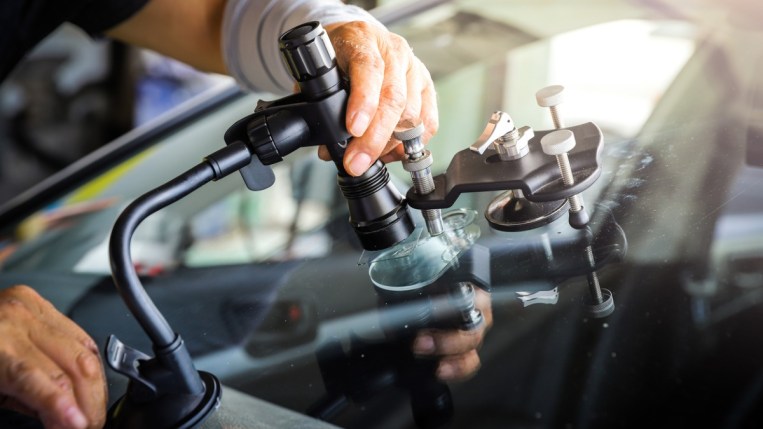
In some cases, your insurance policy will cover repairs to a cracked windshield. However, it depends on which type of insurance coverage you carry. Comprehensive insurance will likely cover any windshield damage that does not come from an accident– such as falling debris, a rock hitting your car on the highway, and even hitting a deer.
Collision insurance should cover the damage if the windshield gets cracked or destroyed during a car accident.
Making the Right Choice
Selecting a replacement windshield can get complicated. Check with a service and repair center to determine what windshield is needed. At the same time, check if your windshield requires recalibration for HUD, ADAS, and rain-sensing wipers or if a bare-bones windshield works.
Taken from: https://www.kbb.com

